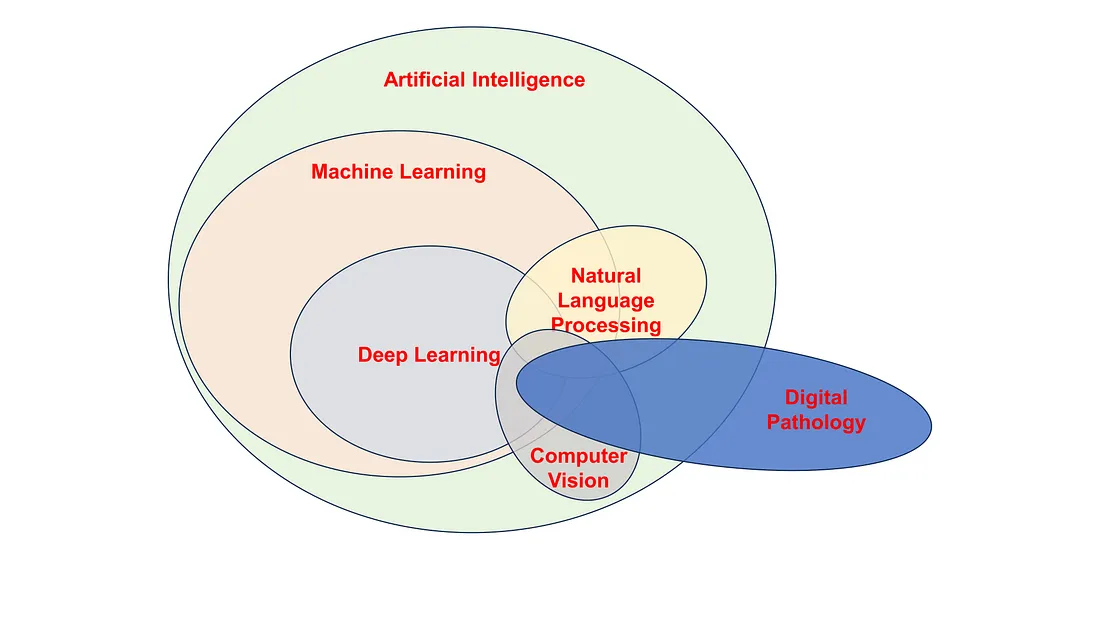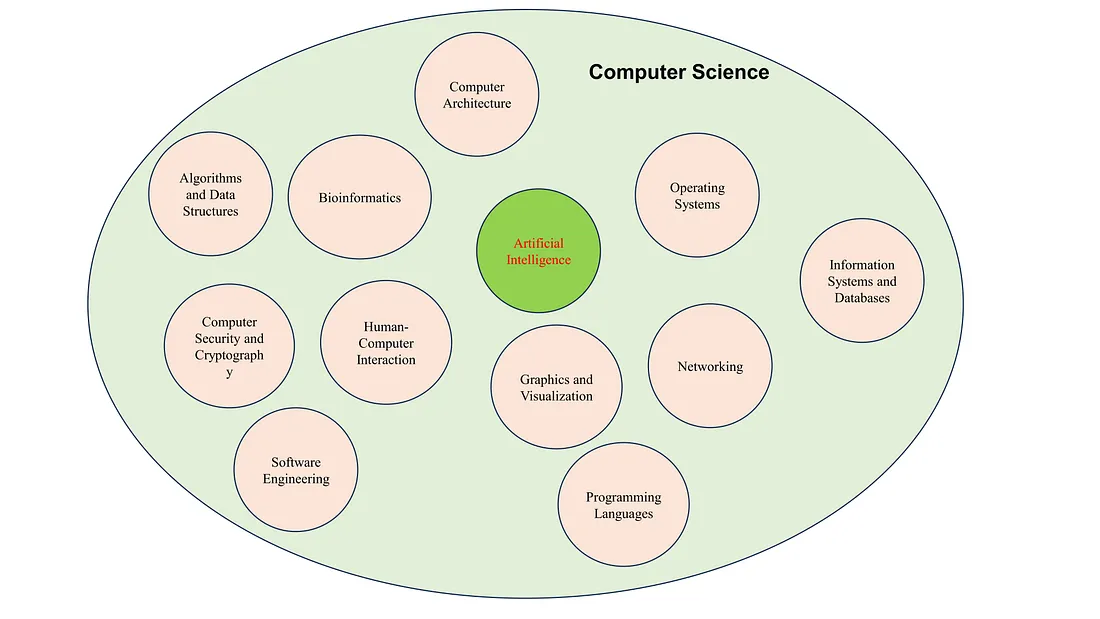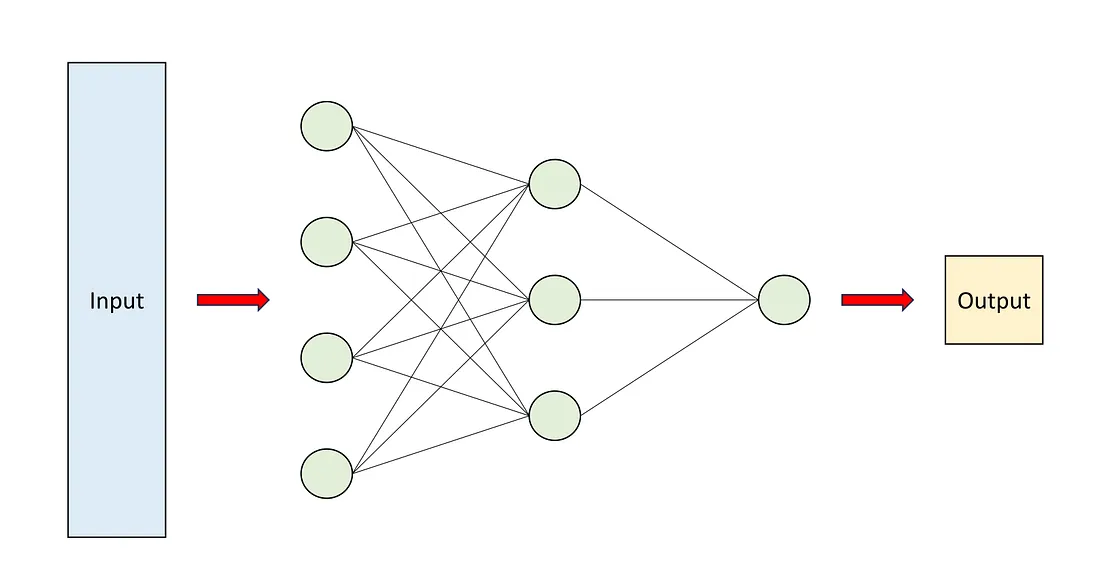FDPNP2: Artificial Intelligence under the Microscope (Part 1)
Preface: I want to initiate a comprehensive series, “Fundamentals of Digital Pathology for Novice Pathologists (FDPNP)”. This endeavor aims to disseminate knowledge about the utilization of computer vision in the realm of modern pathology to pathologists who want to know more about digital pathology.
Introduction
Artificial Intelligence (AI) is often regarded as the third major development in the field of pathology. However, the term “AI” can be vague and potentially misleading. In this topic, I will clarify the definition of AI (Part 1),specify the aspect of AI that is relevant to digital pathology (Part 2), and summarize the AI tasks in digital pathology (Part 3).
 Graphical Figure - Image by Author
Graphical Figure - Image by Author
The concept of AI
Firstly, it’s important to clarify the nature of AI, which is often misconstrued. AI is not a robot or a specific computer system. Rather, the term refers to a branch of computer science and does not represent a single, tangible entity that can be seen or directed.
 The concept of AI - Image by Author
The concept of AI - Image by Author
The relationships between buzzwords
Digital Pathology, AI, Machine Learning, Deep Learning, Computer Vision, and Natural Language Processing are frequently mentioned when discussing the application of AI in digital pathology. These concepts and applications are indeed intriguing. However, for beginners, understanding the definitions and relationships between these terms can be a daunting and perplexing task.
I summarize these relationships and definitions in this image:
 Relationships between buzzwords, including artificial intelligence, machine learning, deep learning, computer vision, natural language processing, and digital pathology - Image by Author
Relationships between buzzwords, including artificial intelligence, machine learning, deep learning, computer vision, natural language processing, and digital pathology - Image by Author
Detailed explanations of these concepts are beyond the scope of this review. We will delve into them in subsequent blogs of the FDPNP series. For now, our focus is on differentiating between the concepts of machine learning and deep learning.
Machine Learning vs. Deep Learning
Machine Learning (ML) is a branch of Artificial Intelligence (AI) that emphasizes the design and application of algorithms that can learn and adapt without explicit directives. Rather than devising your own computations to accomplish a task, such as formulating a risk scoring chart to categorize the risk of cancer progression, you allow the ML algorithms to formulate their own computations by adjusting their parameters.
 Examples of man-made and machine-learning models
Examples of man-made and machine-learning models
Deep Learning (DL) is a branch of ML that focuses on the design and application of artificial neural networks (ANN), a special type of ML algorithm that can be very versatile to handle different types of data.
 Simplified schematic of artificial neural network (ANN) - Image by Author
Simplified schematic of artificial neural network (ANN) - Image by Author
From my perspective, there are two straightforward (though not comprehensive) ways to differentiate between employing Machine Learning (ML) and Deep Learning (DL). These involve (1) the structure of the model, specifically whether it incorporates elements of Artificial Neural Networks (ANN), and (2) the type of input features, particularly whether these features are structured or unstructured.
Features that can be organized into a data table are referred to as structured data, while those that cannot be tabulated are termed unstructured data. Unstructured data includes visual, audio, and text information. Image is a type of unstructured data. As we dissected it into a 3D tensor in FDPNP1, it doesn’t conform well to a tabular format. Images are not classic variables, at least in their original forms. Classic variables should be numbers or categories that we all do in statistical analyses. Essentially, classic ML algorithms can not effectively utilize the unstructured features.
 Unstructured and Structured Data
Unstructured and Structured Data
However, I would say that this is a simplified explanation, and the choice between ML and DL can depend on various factors including the complexity of the task, the amount of data available, and the computational resources at hand.
There are two simple ways to determine whether we are discussing Deep Learning (DL): nature of the model, which incorporates elements of ANN, and the type of input features, which is unstructured.
Conclusion
In order to understand AI in pathology, we have to know where to put AI concepts into the story. Only then can we dive into this topic.
For those who may be interested, I hope you enjoy this mini-review.